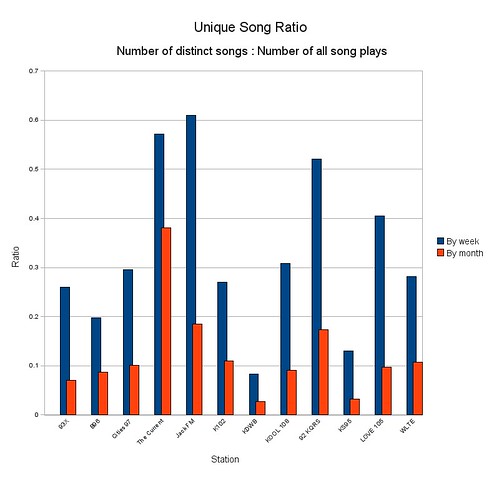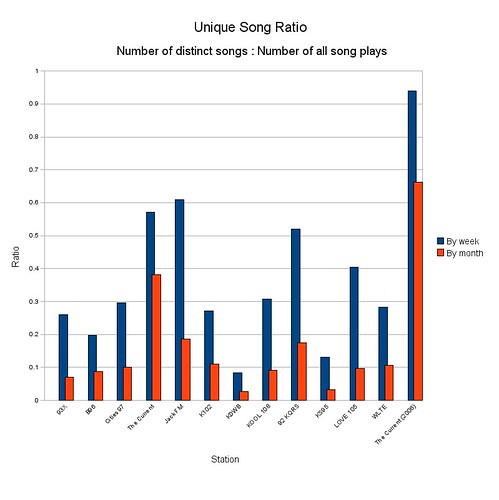Want to get phished? Don't worry, it won't hurt.
If you have an account with Vanguard, the investment firm,
you can experience it for yourself right here (works on IE7, IE8, or FF3). If not, you can watch
a quick screencast of me phishing myself. Note that this is clearly not the Vanguard site, and yet after I enter my username, I'm shown my personal image (mine's a canoe! what's yours?). I didn't answer any security questions, and yet that's my personal image that only my bank and I are supposed to know. And here it is on some scammer's site. That's the unique part of my attack, and the most dangerous.
By the way, that screen at the end is where the scammer has just obtained your password and is happily emptying your bank account (since I'm nice, I just display a hash and don't save it).
I don't mean to pick on Vanguard, I just happened to have an account with them. A similar attack should be quite possible on
Bank of America, HSA Bank, or anyone else who uses the
SiteKey system. SiteKey is a scheme banks came up with in response to the large and largely-intractable problem posed by phishing. It's sometimes labeled as a "multi-factor authentication" system, but I think that's incorrect - it's more of a "mutual authentication" system. The site proves that they are legitimate by showing you a picture that you selected when you sign up. Since no one else could know what picture you have set, this proves that the site is who you think it is. At least, that's the theory.
My attack is simple. The first page is just a static page that looks exactly like Vanguard's home page - standard phishing fare. When you submit the form with your username, I build a page with an iframe pointing to the Vanguard site, passing it the username. As long as you've logged in from this computer before, the Vanguard site happily shows your personal image. Then I create a form outside of the iframe with a password field and a submit button, and float those elements over the iframe. So while you're seeing the Vanguard site in the background, you're entering your password into a form I control, and the submit button you click submits to my page. And just like that, I have your password.
I have your password. I did this with a freakin' Bachelor of Arts degree. It took me about three hours of messing around to get the basics set up, and another few hours to spit and polish. It's a couple of dumb HTML pages with a few snippets of PHP, and a pinch of Javascript thrown in. There is nothing sophisticated here. I don't think this even qualifies as a "hack." I think you should be concerned. This attack has been possible as long as SiteKey has been in existence, and I see no reason why I would be the only person to think this up. In all likelihood, some smart phisher out there is already doing this.
I learned retroactively that this technique is called
UI Redressing, more commonly referred to as Clickjacking. It's behind a number of attacks, of which perhaps the most publicly visible (although not the most dangerous) was the
Twitter "Don't Click" infection. Even worse, since my attack requires no clicking on the actual hidden elements, even NoScript's vaunted
ClearClick technology doesn't detect it (NoScript does offer an opt-in to disable iframe content, which sounds like it should stop the attack, but it didn't work for me).
SiteKey was weak to begin with. It's bad enough that a vast majority of site users
don't notice if the image is missing. And a weaker man-in-the-middle attack that involved asking security questions
was demonstrated 3 years ago[pdf]. But this is worse. A malicious site that shows you your own handpicked image will lull you into a false sense of security. Who would think twice about providing personal information when that mountain stream or étouffée or whatever you picked is staring you right in the face? The banks have worked hard to train users to look for that image, and that very training can be turned against them to make phishing attacks even more successful than before. SiteKey is not just useless - it's
worse than nothing at all.
I have been in contact with RSA Security, the vendors of SiteKey, about this attack. To their credit, they were very professional about the whole thing. They treated the matter seriously (I was surprised to get a response at all), and did not try to bullshit or bully me. So they get points for understanding how to make the vulnerability reporting process a productive one. They told me they have notified their clients about the problem and suggested corrective action. I imagine this action will consist of
frame-busting Javascript and a
proprietary IE8 header. I can only speculate because as of this posting, neither Vanguard nor HSA Bank have done anything to prevent the attack, even though it has been two months since I reported it. These changes will help, but the headers are opt-in and only work on newer browsers, and the Javascript isn't necessarily immune to circumvention. Besides, recall what I said about my qualifications as a security researcher. If I came up with this in a few hours of spare time, don't try to tell me there aren't similar attacks that could be discovered by a motivated person - say, someone who makes a living managing a phishing operation.
There's another reason I think SiteKey is worse than nothing. It's not just users who get a false sense of security from it - banks are biting on these supposed panaceas instead of facing up to the very difficult problem of performing real security. It's all too easy for companies to
set arcane password rules and shell out money for "solutions" like SiteKey, and convince themselves that they've tried hard enough. Wrong. SiteKey is like a Mickey Mouse band aid on the wrong knee. Maybe it gets the three year old to stop crying, but it's not actually doing any good.
Epilogue
I know, I know, I'm such a negative person. Always bringing other people down. Complaining about what exists without offering any suggestions of my own. What would I propose to guard against phishing? Huh, tough guy?
I have to be honest - I don't see a silver bullet. Phishing is a serious threat, and one that preys on our inescapably human failings - inattention, belief that our perceptions are accurate, and willingness to adapt our actions to what we are presented with. I don't see it going anywhere any time soon. However, I think the Firefox address bar is a great start:

If we have to train users to look for something, it should be this. Benefits:
- It's client-side. No man-in-the-middle. No UI redressing. Short of a serious Firefox exploit or SSL vulnerability, there's no faking this part of the address bar.
- It comes (I assume) from the SSL certificate, which is a pretty okay security measure, and one that any respectable site dealing with sensitive information already uses.
- It's friendly and distinctive - it's big and green and it tells you the name of the company.
- It's right next to the address bar, which encourages one to also check the URL. This is the original best security measure, and one that eBay and others have been advocating for years. I should point out that the pretty little Locationbar² plugin is helping here as well by highlighting the domain name so it stands out against the rest of the URL.
Still, this only works if you think to look. The danger of phishing is that you get caught at the end of a long day, or when you're in a hurry, or when fucking PayPal actually
has deactivated your account three times in the past and you're so annoyed by the prospect of a fourth that you get careless and don't check.
I've got another suggestion, but this one is a lot further from reality. This is what I think
could be, if we would spend less time on
fake security and more time on real security.
Imagine, if you will, a world where PGP is commonplace. That's right, I'm
evangelizing again. Imagine every email you receive is signed, and you have an extensive trust network. When you open an account at a new bank, the rep hands you a piece of paper with instructions on downloading the bank's public key and a fingerprint to verify it. Because PGP is so common, your email client actually throws up a big red warning saying "Hey! This signature is untrusted!" whenever you get email from someone whose key you haven't imported. Suddenly you have a proactive warning on every phishing email that comes through. Nobody is going to click through a message from their bank that is labeled as "untrusted." You could teach your grandparents that.
Is this a pipe dream? For now, yeah. But it's a good one - it's a world where email phishing is essentially solved.
Until then, keep checking your address bar.
Update (12/03/09): Looks like at some point in the past few months, Vanguard updated their site with some frame-busting Javascript, and now hides the pages if Javascript is disabled (bad news for accessibility, but arguably more secure). However, let me reiterate: the fact that they have stuck their finger in this leak doesn't mean there aren't other holes in the dike.
Another update: I sent this article to Jim Youll, the author of the original paper on SiteKey vulnerabilities. He emailed me back, and in his response was a remark that stuck with me: "they always say that the undisclosed back-end systems are the fail-safe for the front-end attacks. I don't think they're lying." At some point, it hit me:
what if SiteKey is nothing more than security theater? Maybe they
do know that it's useless. Maybe they don't expect it to stop anything. Maybe whatever fee they're shelling out isn't coming from the security budget, but from the marketing budget. If this is the case, I just hope the marketing spiel isn't working on the people who need to be doing the
real security.










